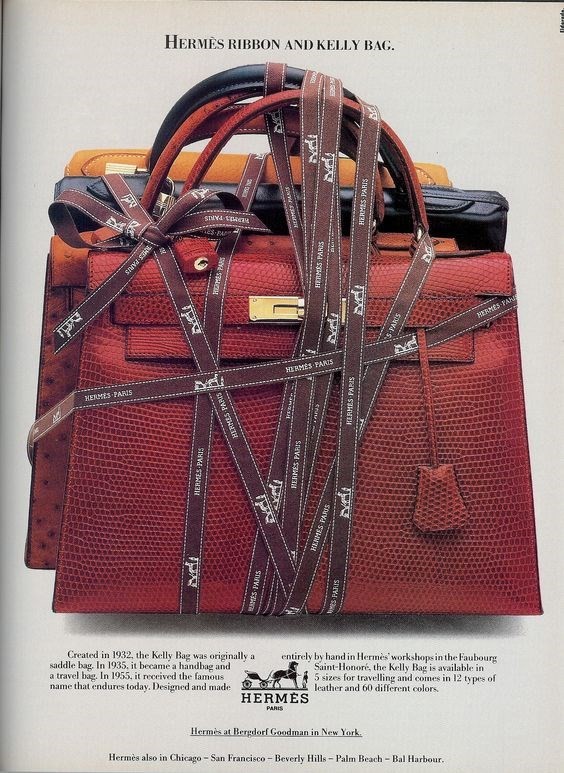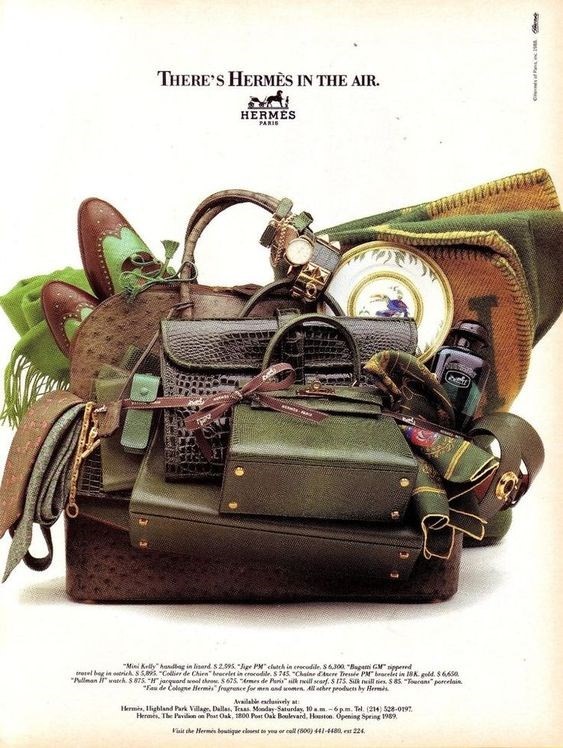In his latest column, Meadham discusses one of his greatest fashion obsessions: Hermès
Edward Meadham has a remarkable mind, to which his work as a fashion designer attests. His creations are infused with references to his loves, interests and obsessions – “Beautiful things, craft and subculture,” as he once told us. In a new column for AnOthermag.com, Meadham will write about these obsessions, guiding us through the things that inspire him.
In September 1999, I was just four months into my 20th year. I had escaped the silent house I grew up in, moved to London, and was about to embark on my first year at Central Saint Martins. It was then that I discovered Hermès.
Although I had begun to devour fashion magazines and history books eight years prior, Hermès had not been on my radar – with the exception of a clipping from a 1997 issue of British Vogue, where Courtney Love (who I wrote about in my last column) goes into raptures over a Hermès Collier de Chien bracelet. (I kept that image on my bedroom wall and still have it to this day.)
I remember that bracelet; I loved it and wanted one myself – the clunky shiny palladium-plated pyramid-studded leather cuff fit perfectly into my slightly schizophrenic look, which at that time comprised of big backcombed dyed black hair, one-inch thick unset foundation, smudgy eyeliner with glitter gel accents around my tear ducts, leopard-print shirts, Buffalo platform trainers and always stacks of studded wristbands and cuffs.

Aside from that one example – and a singular image of a leather dress in the 1950s chapter of my copy of Vogue’s History of 20th Century Fashion book – I don’t recall any Hermès from the magazines I had studied.
It wasn’t until I arrived in London and settled into my Stoke Newington house that Natalie (my then-flatmate) showed me her Hermès screen-printed silk scarves, which she had brought over from Switzerland – some still folded neatly in their orange boxes, with names like Brides de Gala, Champignons, and L’Atlantide. I fell in love with the microscopic detail and precision of the screen prints; the perfectly mitered corners of the hand-rolled, hand-stitched edges, protected beneath the folds of crisp white paper inside immaculately fitted thin orange boxes – I’d never seen or touched anything like that.
“The house became the standard against which I measured everything and the template for everything I aspired to achieve. And to own. It became an obsession”
But the thing that Natalie showed me that really blew my mind was the black box leather mini Kelly bag that she had received as a gift from her father in the 90s. This perfectly proportioned little trapezoid bag with its crisp edges and solid round handle which sat proudly on four small golden feet was a revelation to me. I was awestruck. I understood that Hermès was special, and from that moment on the house became the standard against which I measured everything and the template for everything I aspired to achieve. And to own. It became an obsession.
As it was one of the first houses to embrace the internet in the early 2000s, I spent countless hours on the Hermès website learning about the long, rich history of the house that began as an equestrian harness maker in 1837; about the tradition of the craftpersonship that goes into creating each Hermès item; how each scarf takes around two years to make in a complex process from design inception, engraving and developing of up to 27 separate colour screens, to the hand-rolling and stitching of the edges; how each Hermès Kelly is made from start to finish by hand in one of their ateliers in Pantin (just outside of Paris) by one craftsperson using a myriad of meticulous skills and takes between 30 and 40 hours to complete.

It was not until I properly (yet slowly) began to develop skills in my own craft that I fully appreciated what all of this means in the world of today, where everything has become so fast and ephemeral. Hermès is reliably timeless, aesthetically as well as in terms of quality. Hermès lasts forever, nothing changes. The Hermès Kelly was first designed in 1930 and has remained unchanged (except in the smallest of details) and in constant production ever since. It is only possible to distinguish which year or indeed decade each bag was made in by reading small hidden stamp codes which denote the year, craftsperson and atelier each item was made in.
As I have grown older, I have grown tired of the fickle and exhausting nature of fashion and its perpetual self-fulfilling cycle. Its attention span grows increasingly short, and memory even shorter. There seems nowadays to be a bewildering, never-ending stream of fashion weeks, pre-collections, mid-season drops and exclusive products, which only result in the inevitable dilution of ideas.
Yet through all of this Hermès remains; self-assured and resolute, committed to its equestrian history and confident enough in the quality of its products to never have to vie for attention. While other ‘luxury heritage’ brands have a dizzying myriad of new bags, Hermès make it almost impossible to ever even see any of theirs, and even more impossible to actually buy one of them – and yet this clever but frustrating trick only adds to the allure and mystery that surrounds the process and price of obtaining an Hermès Kelly or Birkin, and to the feverish almost maniacally devoted subculture of people who try.
